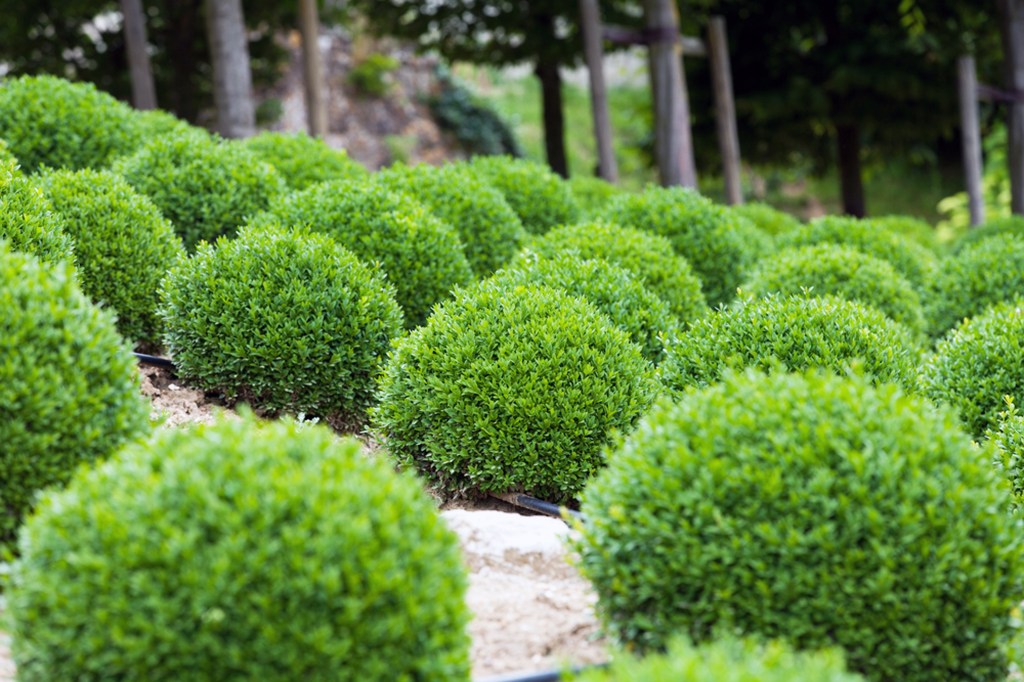HOME, LAWN & GARDEN 2015: Azaleas, boxwoods are hardy ornamentals
Published 11:00 am Friday, September 25, 2015

- Boxwoods
In a region as plant friendly and fertile as the Tennessee Valley, there aren’t too many varieties of ornamental shrub that won’t grow in a homeowner’s yard.
Whether hollies, conifers, junipers or hydrangeas, north Alabama’s climate is accommodating to a number of flowering and non-flowering shrubs.
Lloyd Chapman, a regional extension agent with the Limestone County Extension Office, said it’s actually easier to list what varieties won’t grow. Those include Indian hawthorn, lilacs, indica azaleas and Camellia japonica, or Japanese camellias.
Perhaps the two most popular ornamental shrubs found in local yards are boxwoods and azaleas, both of which are hardy and require little maintenance aside from occasional pruning.
Planting azaleas
Like most ornamentals, azaleas come in different varieties and colors, including pink, red and white. The plants also tend to bloom more vibrantly if planted in a spot that receives at least partial shade.
A mix of shade and sunlight is perfect for azaleas. According to the Azalea Society of America, azaleas bloom well when planted under shady trees. The following are tips provided by the Azalea Society of America on the best way to plant azaleas:
• Determine the proper soil: Azaleas need soil that drains well rather than retaining water after a rain. To determine whether the soil drains well, dig a hole before it rains then check back afterward. If the hole is filled with standing water, the soil doesn’t drain well; it’s likely highly composed of clay. If the water is gone, the soil should be fine for azaleas.
If the soil doesn’t drain well, you can mix it with compost or other organic matter to loosen it up. Till it to a depth of several feet to break it up, then mix in the other well-draining matter. Another option is to plant your azalea in a pot or raised bed, where you can control the soil drainage more. Azaleas also prefer a slightly acidic soil, such as a pH of 5.5 or pH 6. If a soil test reveals an alkaline soil, mix some sulfur into the dirt before planting to balance it.
• Digging the hole: Use a garden shovel to dig a hole in the dirt deep enough to cover the root and bottom of the plant. Dig a few inches wider than the ball of the root, and set the azalea upright in the hole so that the top of the root ball is slightly above the surface of the ground. Drop soil into the hole around the plant. Spread it around and under the azalea, and lightly pat it into place with your fingertips.
Wet the azalea before planting. Dip the root ball in a bucket of water, or use a hose to lightly dampen it, before setting the azalea into the ground.
If you are planting more than one azalea, make sure the holes are spaced several feet apart.
• Watering, mulching and fertilizing: Water the plant and the soil slowly and thoroughly. Water again the day after planting. The plants must be watered at least once per week, unless they are in direct sunlight, in which case they must be watered more frequently. Take care not to let the azalea dry out, or it will wither.
Mulch the area around azalea plants after the blooms fade. Use pine bark, pine needles, sawdust or wood chips between the bushes. This will keep the soil moist and the temperature of the dirt even. Mulch will also help keep out weeds.
If your soil is rich and acidic, you won’t need to fertilize often. If you do choose to fertilize, do it in spring, right after the azalea blooms. Use an acid forming fertilizer like cottonseed meal, or choose a special azalea fertilizer.
Improper fertilizing can cause the plant to bloom at the wrong time, so be sure to fertilize only if required.
• Pruning: Do a light pruning after the blooms fade. That is also the time to reshape azaleas. Cut long, stray shoots next to woody branches to retain the azalea’s natural form. Trim back areas that seem too crowded to promote air flow and improve the look of the bush. Be sure you make careful cuts and don’t use hedge clippers to haphazardly trim the bush.
Don’t prune too late in the year. Prune no later than three weeks after the blooms have gone. Otherwise, you’ll be cutting away next year’s flower growth.
If you have an azalea that has grown too large and you’re ready to cut it back, cut it to within a foot of the ground and it will grow back bushy and beautiful. Do it after the blooms of spring have faded, so the plant has time to reestablish itself before the next phase of growth.
Boxwoods
Chapman said boxwood shrubs grow very well in north Alabama’s climate, but buyers should also beware. He said homeowners interested in planting boxwoods should make sure they’re purchasing boxwoods grown in Alabama, and not out of state.
The reason why purchasing homegrown boxwoods is important, he said, is because a disease has been found on boxwoods grown in states like Oregon, Virginia and North Carolina. Larger retail outlets often carry out-of-state varieties, so he said it’s important to ask outdoor managers where the boxwoods came from.
He said the disease was first spotted in 2013 in Birmingham. Extension agents first believed it may have been an isolated case, but it then started showing up in more and more plants. The disease is a spot that appears on the leaves of the shrub. As of now, he said, there’s no evidence to suggest the disease spreads to other ornamental shrubs.
“Under certain environmental conditions, (the disease) will just defoliate the boxwoods,” he said. “You can remove the plant, but the spores can stay in the soil for up to five years.”
He said owners of diseased boxwoods might try spraying a fungicide every two weeks.
“But who wants to do that?” Chapman asked. “This is a plant we’ve never had any problems with, but it’s a new disease and it’s going to impact a lot of people.”
He said the best defense against the disease is education and ensuring homeowners and landscapers buy only homegrown boxwoods. The following are tips on how to best plant boxwoods:
• When and where to plant: Chapman said fall is the best time to plant boxwoods or any other type of ornamental shrub. They tend to perform best when planted where they will receive partial shade, but full sun from the north or south.
• Test your soil: The optimal pH level of the soil is slightly acidic, around 6 or 7 on the scale. Thick, fertile soil is best. The soil should also drain well, as boxwood’s short roots require quick drainage so they do not drown. Chapman said soil test kits may be picked up at the Limestone County Extension office on Market Street in Athens.
• Planting the boxwood: Loosen the ball of roots on a new boxwood plant so they are mostly spread out.
If the plant is a transplant, skip this step. Dig a hole in the soil about as deep as the plant’s height and as wide as the spread of the roots.
If you are planting the boxwood in a pot, place the root ball into shrub soil about 2 inches deep. Place the boxwood inside the hole and cover the roots with water and soil about 2 inches short of the top. Pour 2 inches of mulch into the remainder of the hole and pack it down. Chapman said pine mulch and/or pine straw works best for ornamentals.
• Watering: Water the boxwood once a week during warm months and much less often during cooler periods.






